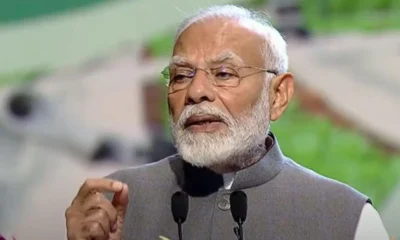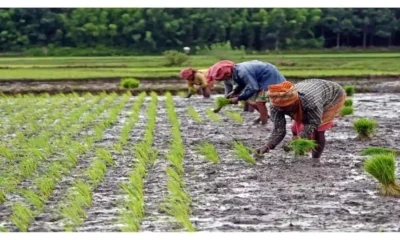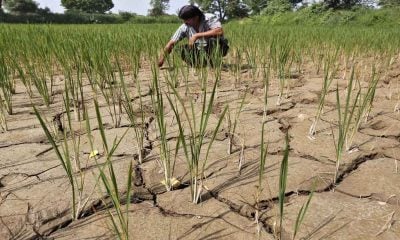[vc_row][vc_column][vc_column_text]If the government is willing to change the credit culture in our country and give a leg-up to farmers, it will help transform millions of lives and fuel economic growth, award-winning agricultural expert DEVINDER SHARMA tells RASHME SEHGAL
Tamil Nadu farmers had been protesting for 41 days in the capital and demanding a Rs 40,000-crore drought relief package and farm loan waiver as also the setting up of the Cauvery Management Board. The government has so far not come forward to okay this financial package. Is this because of paucity of funds?
Tamil Nadu farmers have brought the plight of the farmers onto the national scene. Agriculture throughout the country has been faced with grave difficulties for the past few decades and successive governments have failed to do much, simply trying to push the crisis under the carpet. Over the past 21 years, as per the National Crime Record Bureau, more than 3.18 lakh farmers have committed suicide. The serial death dance on the farm has continued unabated, a stark reminder to the dark underbelly in a country which claims to be on a growth trajectory. The demand of the Tamil Nadu farmers to waive Rs 40,000 crore is clearly indicative of how deeply indebted farming has become over the years. People living in cities can’t even imagine the extreme distress that prevails in several parts of India reeling under continuous drought for several years now. Parts of Tamil Nadu, Andhra Pradesh, Telangana, Karnataka, Jharkhand, and Bihar have somehow been surviving with droughts continuing for as many as six to seven years at a stretch. What shocks me is that even in Bangalore, people have no idea of the extent of drought prevailing just 50 km away from the mega-city. That’s the kind of disconnect that exists between India and Bharat.
The economic crisis farmers are facing is compounded by the denial of a rightful income to farmers for their produce. To keep food inflation under control it is the farmers who have paid the price. What we don’t realize is that it is the farmers who have been subsidising the nation all these years.
Farmers are in distress throughout the country, be it in Karnataka, Punjab, Maharashtra or UP. Why has the situation reached these extreme levels and what can be done to reverse this trend?
The Economic Survey 2016 had clearly pointed to the severity of the prevailing agrarian crisis. Accordingly, the average annual income of a farm family in 17 states of India is a paltry Rs 20,000. This means, the average monthly income for a farm household in these 17 states is less than Rs 1,700. I shudder to think how farmers survive with such meagre income. Most of us who live in cities have a monthly mobile bill exceeding this. I thought this revelation alone should have shocked the country and forced policy planners to undertake immediate steps to address the grave tragedy. But unfortunately, nothing of that sort happened.
Except for routine lip-service, I don’t see any concrete measures being spelled out. In fact, what is being proposed by Niti Aayog as solution to this vexed crisis clearly shows how misplaced the emphasis is. The solutions that Niti Aayog suggests shows our planners can’t even think beyond what is prescribed in textbooks. Increasing crop productivity, expanding irrigation and reducing the cost of production as the way forward actually show that our economists haven’t learnt any lesson from the farm debacle.
Let me make it clear. Farmers are dying not because crop productivity is low. They are dying even in those areas where productivity is the highest in the world. Take the case of Punjab, where 98 per cent of the cultivable land is under assured irrigation. The productivity of wheat is 45 quintals per hectare, the highest in the world; and for paddy at 60 quintals/hectare, it is close to the 67 quintals/hectare of paddy productivity in China. With such high yields, amongst the highest in the world, and with 98 percent assured irrigation, Punjab farmers should have done remarkably well. But unfortunately what is not known is that there is hardly a day when two or three or four farmers don’t commit suicide. Punjab has now turned into a suicide hotspot. The problem, therefore, is not one of low productivity but that of lack of remunerative and assured farm incomes. But if you look at the policy direction, all thrust is on production alone.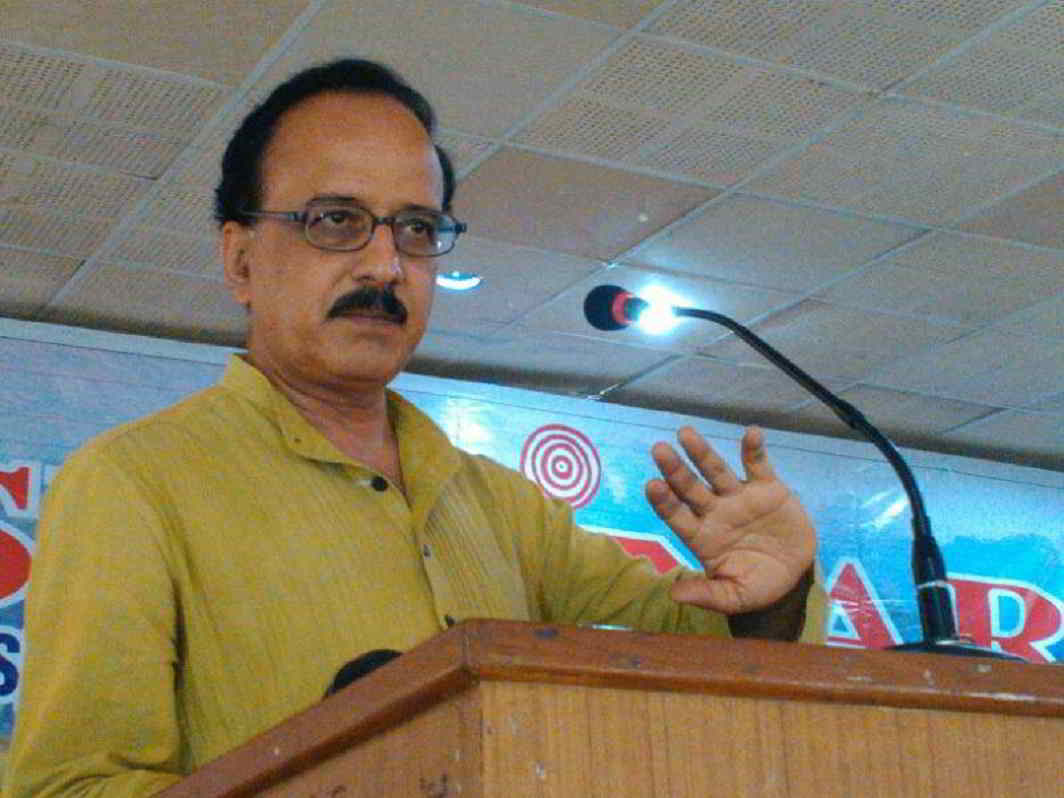
In Punjab, 98 percent of rural households are in debt, and in 94 per cent cases the expenditure is more than the income they get. It clearly shows that the economic prescription being doled out to pull the farmers out of the crisis is simply flawed. In any case, the people who have been at the helm of affairs when the agrarian crisis was building up cannot be expected to provide the right solutions.
Yogi Adityanath waived the farmers loans in UP. This led the Reserve Bank governor and others to complain that writing off loans on this scale would hurt the credit culture of the country. But the distress of the farmers can be seen from the fact that the Tamil Nadu farmers had brought the skulls of dead farmers along with them to protest government apathy and were willing to drink their own urine and eat faeces to highlight the enormity of their problems.
I was very disappointed to read RBI governor Urjit Patel’s statement when he said that farm loan waivers disrupt an honest credit culture. I have never understood why only farm loan waivers hurt the credit culture. Why is it that the corporate loan waiver is seen as a step towards economic growth whereas cancelling the outstanding loans of poor farmers is considered wrong? Chief economic advisor Arvind Subramanian has gone on record saying that corporate loans have to be written off, adding that this is how capitalism works.
These are double standards. We cannot have a dual approach when it comes to corporate loans versus farm loans. In the three-year period, between 2013 and 2016, more than Rs 17-lakh crore worth of tax concessions have been given to the corporate sector. Despite these massive tax concessions, and numerous other instances of economic largesse under the ease of doing business including land acquisitions at a heavily subsidized price, a newspaper reported that as much as Rs 7-lakh crore has either been written off or restructured in the past few years. Is that honest credit culture? The Public Accounts Committee of Parliament estimates Rs 6.8-lakh crore to be the accumulated bank default of which 70 per cent belongs to corporate and only 1 per cent caters to farmers. India Ratings tells us that more than Rs 4 lakh crore of NPAs is expected to be waived in the near future.
Yogi Adityanath has taken a remarkable step by writing off Rs 36,359-crore of outstanding loans, which will benefit over 92-lakh small and marginal farmers. This is not only good politics but also good economics. Andhra Pradesh/Telangana has already written off Rs 50,000-crore farmer loans. Maharashtra is toying with the idea of waiving Rs 30,500-crore farm loans, and Punjab is under pressure to waive Rs 36,000-crore farm loans. Add all these figures, and they still equal Rs 1.5 lakh crore, the total value of NPAs that the steel industry alone is seeking to be cancelled.
Should the credit culture of industry and corporate houses be compared to agriculture? It seems to me that both sectors are in distress. The fact is that the impact of a distressed agricultural sector is also felt by the manufacturing sector.
Yes, there is no economic rationale in looking at farm loans and corporate loans separately. Both the corporate sector and farmers take loans from the banks. We cannot make exemptions for the rich and penalize the poor. This is bad economics.
But the credit culture is so disguised that people fail to see how cleverly it is designed to help the corporates. When it comes to farm loans, the finance ministry wants the state governments to underwrite the write-off. The argument is that since agriculture is a state subject, states have to take responsibility. But when it comes to the corporates, the banks do not need the state’s nod to strike down the bad debt. Why these exemptions for the corporate loan waiver? After all, industry, too, is a state subject and going by the norm the states should be asked to underwrite the waiver.
Let me illustrate. Maharashtra has outstanding farm loans of Rs 30,500 crore that it is struggling to waive. The bad debt of Essar Steel, according to media reports, exceeds Rs 33,000 crore. The corporate office of Essar Steel is in Mumbai, and I don’t find the RBI asking Maharashtra to stand guarantee for the steel giant’s bad debt waiver. This is grossly unfair. The state should therefore refuse to underwrite farm loans. Just like the corporate loans, banks should be directed to write off farm loans without disrupting the state’s finances.
Part of the problem in agriculture is fragmented land holdings, dependence on an erratic monsoon, high cost of seeds and fertilizers and, of course, the impact of climate change. How do farmers deal with a slew of these problems? Are we reaching a stage where agriculture will have to subsidised in the way it is being subsidised in the West?
There is no denying that agriculture faces a number of problems. Fragmented land holdings are certainly a major cause for worry. But still I don’t see any reason why farmers should be pushed out of agriculture. It was in 1996 that World Bank directed India to move 400 million people out of agriculture into the urban sectors. This was to be accomplished in the next 20 years, by 2015. Successive governments have only been following the economic prescription blindly. The argument has been that no other developed country has been able to grow with such a large population engaged in farming.
Former RBI governor Raghuram Rajan had said that that the best reform would be when we are able to move out the bulk of the farming population into the cities. In other words, agriculture is being sacrificed to keep economic reforms going. No wonder, the public sector investments in agriculture have been deliberately pruned. In the 11th Plan period, a total of Rs 1 lakh crore was invested in agriculture in the five years. In the 12th Plan period, it was raised to Rs 1.5 lakh crore. The tragedy is that MNREGA’s budget is more than the total investment in agriculture, which employs 60 crore people.
The point I am trying to make is that agriculture has been deliberately kept impoverished all these years.
In the long run, can we go on writing off agricultural loans indefinitely?
Loan waiver is only a temporary relief. The bigger challenge is to ensure that farmers don’t relapse into debt again. This can only be made possible if the focus of economic reforms shifts to agriculture. I am of the firm opinion that at a time when the world is witnessing a jobless growth, and when all developed countries are faced with an economic slowdown from which there seems to be no way out, only agriculture can reboot the economy. Only agriculture can provide an ever-lasting solution to the demographic disaster that awaits the major economies. Imagine if the 60 crore people engaged in farming, directly and indirectly, were to get more income in their hands. It would send the economy galloping. More income will create more demand, which means the wheels of industrial growth will kickstart. A profitable agriculture will reduce the pressure on cities, and will bring back some sanity to enable planners to restore global warming to manageable levels. This, I think, should be the foundation of Sabka Saath Sabka Vikaas.
Linked to this is the key question that India is fast losing its water resources largely through mismanagement. The result is that the southern states are facing the worst drought in the last 100 years and more.
The environmental disaster that the world is witnessing—and India is no exception—is also the outcome of the policies underlying economic growth. The commodification of natural resources, including water, has taken its toll. Global warming is already drawing a collective stand among nations. But unfortunately, while international agreements on restricting soaring temperature, which also has its impact on water mining, are keeping the international community actively involved, I don’t see much hope unless the G-20 group of countries makes a sincere effort to make urgent corrections to the economic policies that pushes for higher growth.
As an agricultural expert, what are the immediate steps you believe the government must take to help the agricultural sector?
We tend to forget that the farmer is also an entrepreneur. The only limitation has been that unlike the huge support provided for urban entrepreneurs like Start-Up India, farmers have remained largely neglected. Since the underlying effort has been to encourage migration from rural areas, rural youth has not received an equal amount of support. I, therefore, suggest a three-pronged approach to tackle the continuing agrarian crisis:
- Write off the bad debt in agriculture. This will enable the farmer to emerge out of the burden of indebtedness that he has been pushed deeper and deeper into. Unless he emerges free, there is no way farming can be turned into a profitable venture. The parliament has estimated that Rs 12.50 lakh crore is the level of farm indebtedness that prevails.
- Provide farmers with a profitable price. The Commission for Agricultural Costs and Prices (CACP) fixes minimum support price (MSP) for 23 crops, but procures only two crops—wheat and rice. The government must announce procurement for all the 23 crops for which MSP is announced. It must also re-designate the CACP as the Commission for Farmers Income and Welfare, with the mandate to provide an assured monthly package to farmers. I see no reason why farmers’ monthly income should be around Rs 1,700 per month whereas the chaprasi gets a basic salary of Rs 18,000 per month.
- At present, only six percent farmers get the benefit of MSP. Ninety four percent of farmers are dependent on the markets. If these markets were efficient, there is no reason why farming should have been in a terrible crisis. The focus, therefore, should be to expand the network of APMC mandis, to set up a regulated mandi in 5-km radius. This would require investments to expand the existing network of 7,000 APMC mandis to 42,000 mandis. This expansion must also include setting up warehouses and godowns in at least 50 prominent locations spread throughout the country. The country has failed to manage surplus, often forcing farmers to dump tomato/potato crops onto the streets, and it is here that infrastructure development is desperately required. This has to be followed up by various initiatives to provide cheaper credit, land and other measures to prop up agriculture.
[/vc_column_text][/vc_column][/vc_row]


 India News10 hours ago
India News10 hours ago
 Cricket news14 hours ago
Cricket news14 hours ago
 India News7 hours ago
India News7 hours ago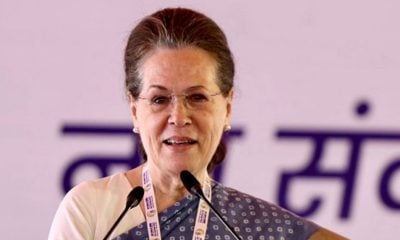
 India News14 hours ago
India News14 hours ago
 Latest world news14 hours ago
Latest world news14 hours ago
 India News11 hours ago
India News11 hours ago
 India News8 hours ago
India News8 hours ago
 Entertainment8 hours ago
Entertainment8 hours ago

